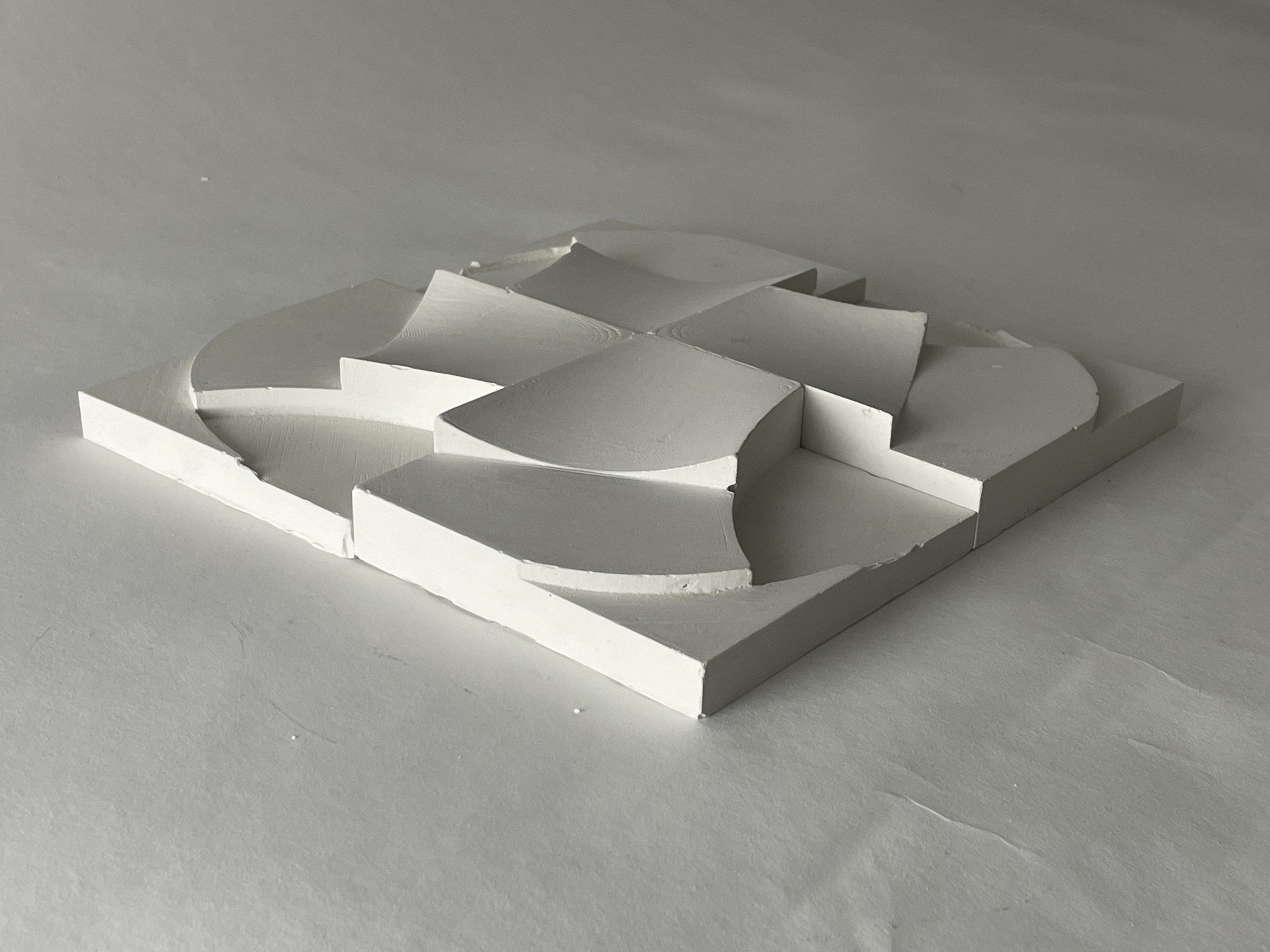Textiles.
The goal of this assignment was to create and develop a tile module that engaged the possibilities of topographical form and expresses an understanding of the one-to-many relationship when repeated. I had to consider necessary alterations and possible design opportunities as I developed my tiling system through a sequence of steps: 2-dimensional design, folded paper, foam, and cast plaster. These tile modules would come together to build an aggregate that would intrigue the eye.
In this stage, I wanted to test out how 2 dimensional drawings could fill a constrained space in 3D. I sketched out multiple tile iterations in 2D first, and after narrowing down into 1 module, I tested different iterations, and turned the module into 3D in Rhino.
After sketching out line work and making 2D sketches into 3D in Rhino, I developed prototypes out of printer paper to get an understanding of what the tile modules might look like in the real world. After picking a versatile module that could be put together into captivating ways, I developed iterations of a single tile to further develop its lines and contours.
-
Form studio II
-
4 weeks
-
A modular system of textiles casted from plaster.
2D & 3D Sketchs
Renderings
Final textile
The final textile aggregate, made of the same single module, in certain positions to grab the viewers eye while also be able to be interchangeable and the ability to shift.
Construction
Final Sketches
Prototyping
Brief
To construct the module, I needed to develop a mold to make the plaster used to create the textile. After making the mold using silicon and a 3D printed tile, I molded each textile and developed 4 in total to make a single aggregate.













